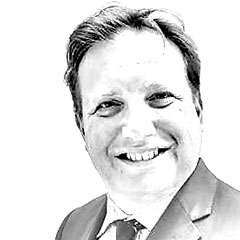altii: Mr. Krombas can you please give us an overview about the Qatar Insurance Company?
Krombas: The Qatar Insurance Company (QIC) is the largest insurance company within the countries of the Gulf Cooperation Council (GCC). QIC has a market capitalization of over USD 4 billion. The major product lines are Motor, Marine, Energy and other general insurance services. The company has more than 50% market share of Qatar market and has operations in UAE, Kuwait, Oman, Switzerland, Malta, UK & Bermuda. In terms of premiums the global reinsurance business is contributing 30%. The company is regulated by the market authorities and has S&P credit rating of “A Stable”. Three years ago, the company decided for diversification reasons to establish in house GCC Equity team for trading all equity markets in the GCC regions and founded our team.
altii: What is the current situation in the GCC markets?
Krombas: The GCC is truly a developing emerging market (EM) environment. It has the advantage that the currencies are pegged to the US-Dollar; the sovereign ratings are amongst the world highest. The GCC has a strong non-oil related GDP growth. The region has a young demographic which is supporting the growth, and the expansionary budgets are clearly enabling a construction and consumer boom. Compared to other EM the stock markets are relatively cheap and liquid. The GCC has a low correlation to the world markets, resulting in an excellent diversification source with-in a portfolio. The biggest market in GCC is the Kingdom of Saudi Arabia and the authorities are making progress by taking necessary steps for formally opening up the stock market to foreign investors. QIC has a strong local presence and our experienced team is fully equipped to capture the opportunities within GCC equities.
altii: What is the setup of the team and your focus?
Krombas: I lead a team of 4 investment professionals based in Qatar with a strong track record. It is a collaborative investment approach and the proximity to our markets allows us to have prime access to investment ideas, management team and brokers. We are bottom-up stock pickers and analyse the opportunities with a clear and singular focus inside the GCC region. Our stock composition in April 2015 was 55% Saudi Arabia, 22% UAE, 10% Kuwait, 9% Qatar and 4% in cash. Our lean decision making process allows us to react in a decent time frames. The track record of the responsible people is practically well proven. It is worth highlighting that even between the markets within the GCC there are relatively low correlations which would not be expected on the first hand. This is an additional source of diversification.
With our view of favouring a larger concentration in the Saudi Arabian market we are clearly prepared for the up-coming changes. We believe that this region will gain traction with the market opening and that it is the right time to be invested. Our fund follows a dividend reinvestment approach. GCC equity dividends are relatively high averaging a 4% yield. The fund doesn’t take directional or tactical bets that results actually out of the fact that the insurance company QIC founded us. Therefore we are probably better suited for other investors that have views which are influenced by long term interests, like pension funds and insurance companies.
altii: That leads to the question is only QIC supporting your ideas right now?
Krombas: We have full support of QIC’s management on the initiative. QIC seeded the fund with US-Dollar 32.5 million. There are additional investors contributing with US-Dollar 20 million. These are mainly regional banks and some early stage investors outside GCC.
altii: Can you give us examples of stocks you are currently analysing?
Krombas: Saudi Arabian Banks are by example major beneficiaries of rising US interest rates. The Saudi Riyal as well as the other currencies in the regions are reflecting the US interest rate policy by being pegged to the US-Dollar. They are highly leveraged to any US rate rise. Al-Rajhi Bank is the world’s largest Islamic Bank and has over 500 branches across the Kingdom of Saudi Arabia and a 35% market share of the retail banking market. The retail focus generates very attractive return on equities.
Another one in Saudi Arabia is Jarir Marketing. The company operates the Jarir Bookstore chain, It sells school supplies, books and electronic goods throughout Saudi Arabia, Qatar and Abu Dhabi. It is the leading seller of smart phones in the Kingdom. The improving household spending caused a direct sales growth in the past 3 years. The company is family owned and has a strong dividend culture. The store expansion is largely organic and the chain is a major beneficiary of the household policy that is also called the “King’s gift” which involved a gift of two months’ salary received by approximately 6 million of the 30 million people.
The last example is from the UAE. Dubai won the World Expo in 2020. The high number of external visitors will cause a boom in the tourism industry and in the real estate sectors. We picked Emaar who is the dominant force in the real estate sector of Dubai and also active in regions like India, Turkey, Saudi Arabia and throughout the Middle East. Emaar has a very strong balance sheet that attractively secures the future funding of the company.
altii: What are the limiting factors for your plans?
Krombas: The entire region would be negatively affected by a substantially lower oil price if it stays significantly low for a longer time. A political risk could result out of the status of the GCC ruling families. The succession situation in Saudi Arabia was just clarified. Last but not least a stock price risk is given. This results out of the portfolio concentration.
altii: Mr. Krombas thank you very much for this interview.

